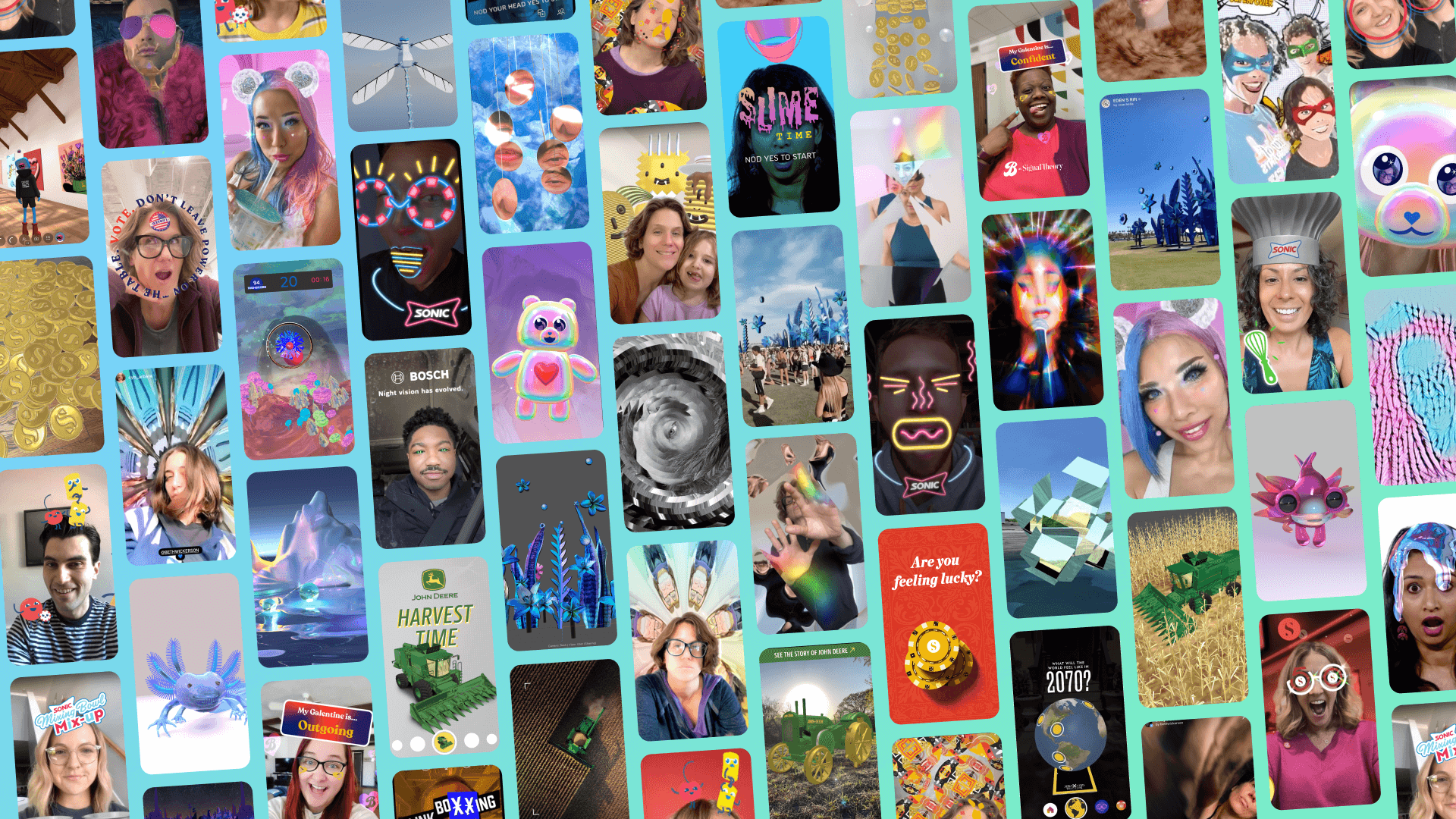Augmented reality is a growing presence in our everyday lives. From filters on social media to product demos to virtual home tours and interactive art, AR is fusing imagination and reality for an elevated customer experience. As a result, brands have increasing opportunities to leverage technology to engage with customers on a very human level.
 Beth Wickerson, associate innovation director at Signal Theory, is shaping the way humans interact with augmented reality and its counterpart, extended reality (XR). This year alone, Wickerson has been involved in many projects that have placed her at the center of the technology’s evolution.
Beth Wickerson, associate innovation director at Signal Theory, is shaping the way humans interact with augmented reality and its counterpart, extended reality (XR). This year alone, Wickerson has been involved in many projects that have placed her at the center of the technology’s evolution.
Wickerson was invited to Meta’s New York City headquarters for its AR Summit to participate in a private beta program. She was also featured in the company’s educational video series, “Scripting AR,” that teaches creators how to incorporate scripting in projects. Beyond this, she worked on a set of video courses that help creators prepare for the Meta Spark Certification exam.
 Through the AR Partnerships Team at Meta, Wickerson had the chance to elevate the experience for attendees of the 2023 Coachella Valley Music and Arts Festival. One of four large-scale installations at Coachella, Eden by Maggie West, was the festival’s first photography installation and one of the world’s largest 3D color photography installations, reaching heights of 56 feet. Wickerson built a virtual extension for the installation to allow fans to traverse into a new dimension of the festival, participate in the creative experiences and discover new layers of festival art, creativity and play.
Through the AR Partnerships Team at Meta, Wickerson had the chance to elevate the experience for attendees of the 2023 Coachella Valley Music and Arts Festival. One of four large-scale installations at Coachella, Eden by Maggie West, was the festival’s first photography installation and one of the world’s largest 3D color photography installations, reaching heights of 56 feet. Wickerson built a virtual extension for the installation to allow fans to traverse into a new dimension of the festival, participate in the creative experiences and discover new layers of festival art, creativity and play.
With all of this experience under her belt, Wickerson has truly guided the technology’s development as well as explored new uses for AR in Signal Theory’s client work.
“Augmented reality within advertising is fun and engaging to work on, and it brings me joy that transfers to the final product,” she said. “It’s also a great marketing channel and ultimately an integral product feature that provides a richer, more engaging customer experience.”
XR is everywhere
Wickerson had the opportunity to attend the 2023 Augmented World Expo, held in Silicon Valley this spring. The expo zeroed in on the growing role of augmented and extended reality with its theme, “XR is Everywhere.” During the opening keynote, CEO and cofounder of AWE Ori Inbar noted that XR is a $38 billion industry with 1.2 billion users, according to ARtillery Intelligence. The industry has grown 30% year over year for the past 10 years, making it the fastest-growing sector in tech.
These numbers are especially notable when considering that technologies like AR/XR headsets still have a relatively high barrier to entry for the general public, as Inbar also mentioned in his address. As the industry scales up and widespread consumer adoption becomes a reality, it will be even more important for marketers to incorporate AR and XR into their work to keep brands relevant and engaging.
A study conducted by Neuro-Insight found that augmented reality in advertising is already a powerful tool for increasing brand impact. Imaging technology that allows researchers to look at the brain’s reaction to different stimuli revealed that attention, personal relevance, emotional response and memory encoding all increased when interacting with AR-related content.
These findings highlight an important intersection between new technology and lasting behavioral science principles, where brands will find success.
Tech that’s compatible with human nature
As foreign as new AR and XR devices and applications can feel, they rely on long-held human truths to be effective. Wickerson and her team have found ways to integrate authentic and meaningful uses of AR into Signal Theory’s work, guided by the firm’s behavioral science-driven approach.
Consumers have a tendency to search for comfort in distraction, which AR readily provides with content that offers high entertainment at low effort. Being present in moments that offer consumers comfort can help a brand establish lasting positive associations among its audience.
What better way to create a much-needed distraction or break for audiences than with gamification? Wickerson herself uses VR gaming to relax and disconnect in her downtime, finding joy in her achievements and experiences within the gaming realm.

Last fall, Signal Theory tapped into that insight and helped John Deere connect with farmers during their busiest season through Harvest Time, an AR-powered competitive experience. By taking the excitement of crop harvest and infusing a social element, the filter garnered record engagement for the brand. Putting users in the virtual driver’s seat also replicates the positive feelings farmers get from a good harvest, a time when they’re able to quantify a season’s worth of hard work.
The novelty and interactivity of augmented reality in advertising makes it more shareable as well. Wickerson and her team at Signal Theory were able to tap into this insight with an Instagram filter for Harvesters that allowed attendees to pose with the quirky creatures developed as part of the branding for the group’s annual fundraising event, Feastival.
“If you smile, the beasts smile with you, and if you turn your head, they also turn their head but in the opposite direction so that you appear to be looking at each other,” she explained. “I had fun connecting the facial features of the user to the beast characters. I hope to see people using it and sharing their photos with Harvesters. It adds to the overall fun of the event, which could lead to more donations.”
Three tips for effective AR
As augmented reality becomes a permanent fixture in the advertising world, it’s important for creators and brands to keep best practices in mind to prevent executions from falling flat. Wickerson shared the following pieces of advice that have helped her make the most out of AR solutions.
- Deepen the experience: Effective AR adds a layer of interactivity to an experience that wouldn’t have been possible without the technology.
- Create added value: The most impactful AR experiences allow consumers to derive a benefit from their experience, like learning something new or becoming more productive.
- Intentionality is key: Consumers are more likely to want to use an AR feature if there is purpose behind it.
Embracing augmented reality in advertising shouldn’t be a cue to forget about the human element of our work. Instead, we’re taking it as a challenge to find new and more meaningful ways to bridge the gap between technology and the emotions that make us tick.



